Reviews
Kenneth Anger
USA, 1969
Credits
Review by Leo Goldsmith
Posted on 16 October 2007
Source Fantoma DVD
Categories 31 Days of Horror
All horror films seek, successfully or otherwise, to produce a psycho-sensory experience of some combination of fear, dread, disgust, and the uncanny. Not all involve the supernatural or the occult — some, like slasher films, can even be plausible — though all horror films usually attempt to push the bounds of what we like to think is reasonable within the realm of human logic. In doing so, they produce their effect of horror on the viewer, and it is precisely this intention that links all horror films, above all other dictates of genre and narrative convention.
Kenneth Anger’s dense, eleven-minute film Invocation of My Demon Brother shares almost none of the narrative conventions associated with classically labeled horror films. It is undoubtedly an occult film — a maddening collage of pentagrams, satanic imagery, swastikas, shrunken cats’ heads, and evocations of war, death, drugs, violence, and witchcraft — but whether this thematic linkage alone is enough to classify Anger’s work as horror is certainly debatable. But as much as any film — and certainly any horror film — Invocation of My Demon Brother is one whose ultimate purpose is to prompt a visceral, even chemical response in its viewers. It is, as the filmmaker himself famously described it, “an attack on the sensorium,” and as such is as aggressively horrifying as any more conventional horror film.
Extreme physical and mental responses are encoded in the DNA of Anger’s film, and on its most superficial level, there is much in the film’s imagery that suggests the types of responses that Anger is after. Throughout, images abound of bodies in various states of involuntary or enacted convulsion. Following a brief credit sequence which features the painted image of a black, winged figure with a large red eye, the first shot of the film shows a green-cloaked albino (identified in various notes on the film as the Wandbearer) whose eyes blink and waver spasmodically, reacting reflexively to the white intensity of the klieg lights. Shortly after this, two dangling, denim-clad legs jerk violently without explanation, and later still a hippie dances convulsively at an outdoor Rolling Stones concert. As the film is a product of late 60’s San Francisco, there is a great deal of imagery that suggests psychedelic drug culture — mostly acid and marijuana — and one will not be surprised to see the passing of a joint in one scene. As drug use — and more specifically, the ritual of drug use — is suggested throughout the film, it is clear that the film’s intended effect on the viewer is at least partly lysergic. But the joint in question is also bathed in red light and is being smoked through what appears to be the skull of a shrunken head, suggesting that there is more to Anger’s evocation of drug culture than mere good times and stupefaction.
Kenneth Anger’s own appearance in the film, as a character called the Magus, provides the most explicit indication of the film’s intentions for the spectator. Anger is himself in a state of convulsion, visible onstage performing a kind of satanic rite, moving with the mechanical mania of sped-up film. As an “invocation,” the film both documents Anger’s performance of this rite and enacts it, which is to say that the film itself is the rite that invokes the “demon brother.” Not only do we view Anger as the Magus performing the mass — ritualistically burning Aleister Crowley’s Laws of Oz, brandishing a false goat’s head, and waving about a Nazi swastika flag — but also his film performs this incantation directly upon us.
The cryptic description of the film provided by Anger himself indicates something of what his film “invokes” and how it does so:
Invocation of My Demon Brother (Arrangement in Black and Gold). The shadowing forth of Our Lord Lucifer, as the Powers of Darkness gather at midnight mass. The dance of the Magus widdershins around the Swirling Spiral Force, the solar swastika, until the Bringer of Light — Lucifer — breaks through.
As the Magus, Anger himself “widdershins” (that is, moves counterclockwise) against the clockwise spiral of the swastika, or sun symbol. This is to say that Anger’s physical movement is one that opposes the movement of the sun, and it is presumably through this opposing motion that Lucifer “breaks through.” As has often been noted, the film functions primarily through a series of jarring oppositions — darkness and light, clockwise and counterclockwise — and it is through these that Anger’s Magus mystically invokes his Demon Brother and that Lucifer, god of Light and Anger’s “patron saint of movies,” brings light to the film screen. Light — that is, even the light on the film set — is seen to have a deeply visceral effect from the film’s first images of the albino’s jerking eye movements, and the rest of the film intends to carry out this metaphor with similar, but more complex effects on the viewer.
Anger’s film in this way “attacks” the sensorium first as a contrast of light and color: we begin the film in a cool blue and green and then quickly move into violent contrasts of black and gold and red (the majority of the film’s images are saturated in red light). But like many of Anger’s films, Invocation of My Demon Brother also displays a masterful use of optical printing, and much of Anger’s effect is achieved through the superimposition of images on other images. When Satan himself arrives, portrayed by none other than Church of Satan’s founder, Anton LaVey, he is quickly juxtaposed with a concurrent image of Hell’s Angels bikers, smoking cigarettes, greasing their hair, and showing off their studded leather jackets. Later, the Hell’s Angels images are combined with footage from the funeral of Anger’s pet cat, Midnight (a “midnight mass”?), so that the corpse of the black cat thrown upon a fire explodes into the star-like metal studs of the bikers’ leather jackets. Images from the Magus’ black mass are double-exposed, Anger’s own tattoos of the Mark of the Beast are superimposed over the Wandbearer’s face, and footage of the naked torso of a man is superimposed over upside-down footage of the same, magic(k)ally creating the image of a many-limbed Hindu deity.
Anger employs every cinematic trick at his disposal — trick lenses, lighting and projecting on subjects, speeding up footage, freezing frames, looping, superimposition, crosscutting — to create a dizzying, occasionally stomach-churning experience. And in devilish sympathy with all of this is Mick Jagger’s grating, whining synthesizer score (created, according to Anger, in one sitting and on the occasion of Jagger’s first use of the instrument), which manages to create precisely the right kind of queasy, unnerving mood to complement Anger’s assaulting, demonic imagery. Even if its effect is uniformly maddening, this imagery is itself quite difficult to parse. Rich in Aleister Crowley’s symbolic vocabulary, the film frequently invokes not only satanic symbolism, but also the Egyptian hieroglyphics that were central to Crowley’s occultist practice. “The true Magick of Horus requires the passionate union of opposites,” as Anger quotes Crowley in reference to the film, and indeed the film stages many types of conflict, metaphorical, structural, and physical. The eye of Horus is the film’s most widely recognizable image, and apart from reinforcing the film’s persistent interest in the power of vision (or the power the film might command over the spectator’s vision), it also denotes the mythic defeat of Osiris by his brother, Set, and the subsequent revenge of this defeat by Osiris’ son Horus. This saga is convoluted enough and Anger’s film merely plants suggestions of it in its symbolism. But its implication of creation through a struggle of opposites, of death, war and a subsequent resurrection situates Anger’s film not only in the schema of Crowley’s magickal occultism but also in the climate of late 60s America.
Curiously, Jagger (who cameos in the film for a split second in the Rolling Stones footage) would again be caught on film with the Hell’s Angels at Altamont later that year — an experience that would inspire him to wear a crucifix for some time thenceforth. Anger loops images of Marines descending from a helicopter in Vietnam, sometimes mirrored, often bathed in a red-gold color. And Bobby BeauSoleil, Haight-Ashbury musician and later an associate of the Manson family, appears repeatedly in the guise of Lucifer in the film. Initially, BeauSoleil was to star in and score what was to have been the original version of Anger’s Lucifer Rising, but after some filming, the actor and director had a falling out, and BeauSoleil fled town with much of the footage. BeauSoleil eventually fell in with Manson’s circle and later went to prison for the murder of Mark Hinson; Anger, despondent at the loss of his footage and his star, announced the “death” of his filmmaking career in a full-page ad in the Village Voice. But two years later, Anger performed his resurrection with Invocation, partly reconstructed with some footage salvaged from the original film, while BeauSoleil, who is even now still in prison, later recorded the astonishing, epic score to Anger’s second pass at Lucifer Rising in his prison cell. But in many ways, Invocation of My Demon Brother stands as the final bad-trip of this cultural moment. Like Al Maysles’ Gimme Shelter, Anger’s film illuminates the demonic shadow of the late 60s, the darker half of the Summer of Love in all its chaos and horror.
More 31 Days of Horror
-

Alien
1979 -
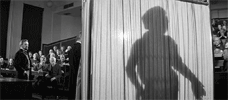
The Elephant Man
1980 -
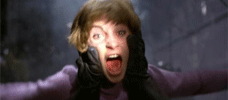
My Bloody Valentine
1981 -
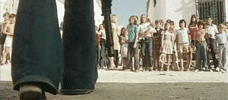
Who Can Kill a Child?
1976 -

Cannibal Holocaust
1980 -
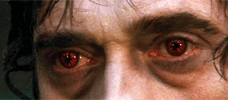
Let Sleeping Corpses Lie
1974 -
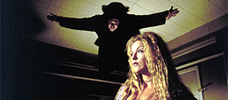
John Carpenter’s Vampires
1998 -

Jaws 2
1978 -
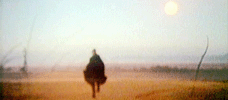
A Warning to the Curious
1972 -

Wolf
1994 -
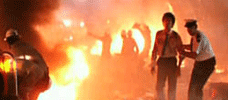
The Survivor
1981 -
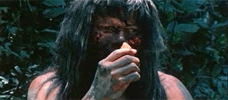
Cannibal Ferox
1981 -
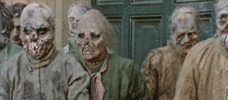
The Nights of Terror
1981 -
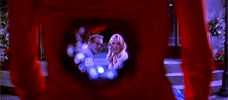
Death Becomes Her
1992 -
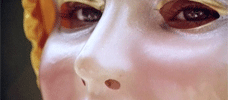
Alice, Sweet Alice
1976 -
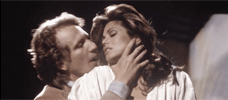
Body Double
1984 -
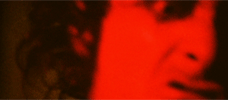
Invocation of My Demon Brother
1969 -
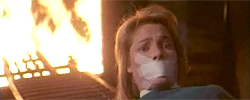
Phantasm II
1988 -
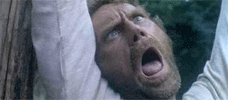
Emanuelle and the Last Cannibals
1977 -
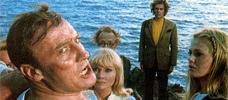
The Wicker Man
1973 -
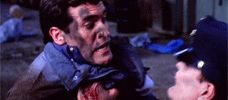
Maniac Cop
1988 -
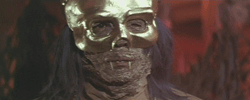
The Legend of the 7 Golden Vampires
1974 -
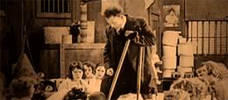
The Penalty
1920 -
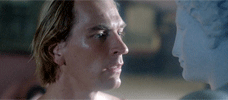
Boxing Helena
1993 -

Chew on This
2005 -
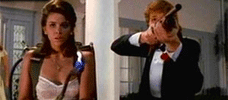
Night of the Creeps
1986 -

Night of the Lepus
1972 -

Near Dark
1987 -
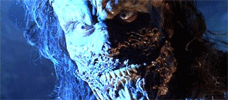
Army of Darkness
1992 -
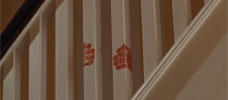
The Brood
1979 -

The Lift
1983 -
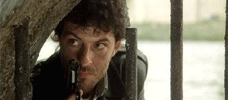
Amsterdamned
1988 -
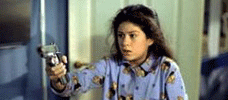
Silent Witness
1999 -

The Shaft
2001
We don’t do comments anymore, but you may contact us here or find us on Twitter or Facebook.



